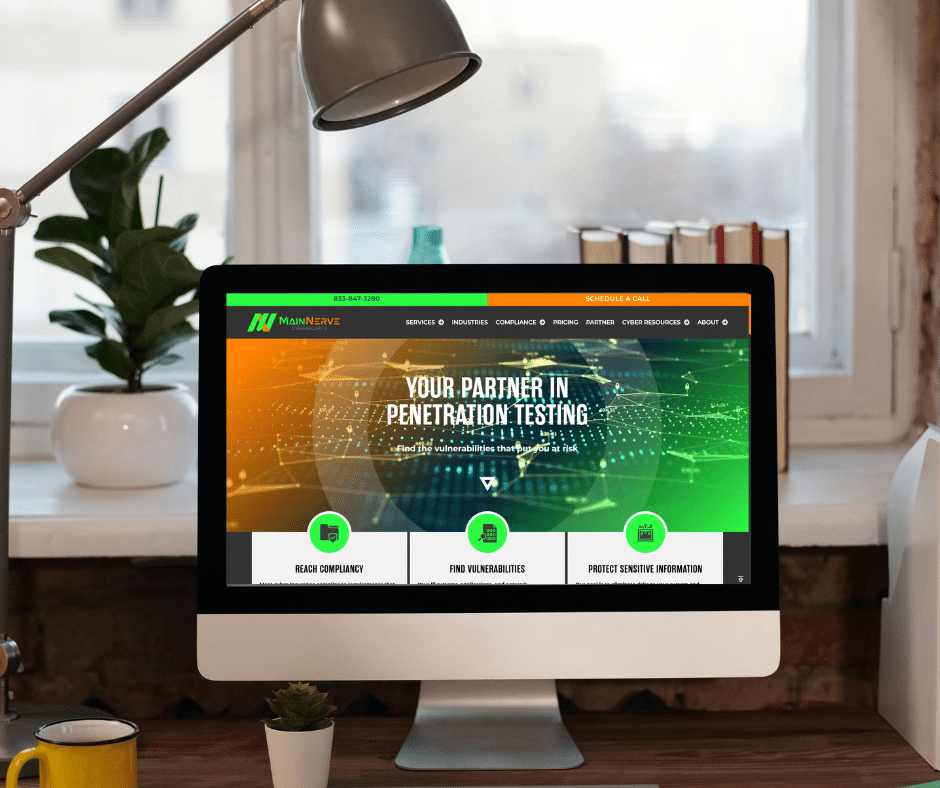In today’s digital-first world, even the simplest business website can become a target for cyber threats. Many business owners assume that small, basic websites, especially those used for marketing purposes, aren’t likely targets for hackers. However, this misconception often leaves businesses vulnerable to a range of cybersecurity risks.
No matter the size or purpose of your website, penetration testing is a vital part of securing your online presence. Here’s why it’s essential to perform penetration tests, even for seemingly straightforward marketing websites.
Why Hackers Target Basic Websites
Small business and marketing websites may not seem like prime targets, but they’re often more appealing to cybercriminals than you’d think. Here are a few reasons why:
- Perceived Low Security
Hackers know that many basic websites lack robust security measures. These sites often use default configurations, weak passwords, or outdated software, making them easy entry points for attackers. - Access to Sensitive Information
Even basic websites may collect sensitive information like email addresses, contact forms, or payment details. If this data is improperly secured, it becomes a goldmine for hackers. - Gateway to Larger Attacks
A compromised marketing website can act as a stepping stone to more significant breaches. For instance, an attacker could use it to distribute malware, target your customers, or escalate access to your business network. - Reputation Damage
A hacked website can harm your business reputation. Whether it’s defacement, spam distribution, or stolen customer data, the fallout from a breach can lead to lost trust, revenue, and clients.
What Is Penetration Testing?
Penetration testing involves simulating cyberattacks on your website to identify vulnerabilities before malicious actors can exploit them. A skilled tester mimics the tactics of real-world hackers, helping you understand where your website’s defenses are weakest.
Penetration testing for business websites focuses on areas such as:
- Unpatched plugins or themes.
- Weak authentication or authorization mechanisms.
- Misconfigured servers or databases.
- Common vulnerabilities like SQL injection, cross-site scripting (XSS), or file inclusion.
The Benefits of Penetration Testing for Business Websites
Pen testing isn’t just for large enterprises or e-commerce platforms. Here’s why it’s essential for even the smallest business websites:
- Identifying Hidden Vulnerabilities
Pen tests uncover weaknesses that aren’t immediately obvious, such as improperly configured security settings or outdated third-party integrations. Many of these issues are overlooked during website development but can create significant risks.
- Preventing Data Breaches
If your website collects contact information or other customer data, a breach could lead to legal, financial, and reputational consequences. Pen tests help ensure that sensitive data is encrypted, securely stored, and protected against unauthorized access.
- Maintaining SEO and Online Presence
A hacked website often results in Google blocklisting or displaying security warnings, which can severely impact your online visibility. Penetration testing for business websites helps protect your website from defacement, malware injection, and other attacks that could hurt your SEO rankings.
- Complying with Regulations
Even basic websites may be subject to privacy laws like GDPR, HIPAA, or CCPA if they collect user data. Penetration testing can help ensure your website complies with these regulations, avoiding fines or legal issues.
- Building Customer Trust
A secure website demonstrates to customers and visitors that you prioritize their safety. Regular penetration testing and visible security measures build trust and confidence in your business.
Why Basic Websites Are at Risk
Many small or marketing-focused websites are built using website builders like WordPress, Wix, or Squarespace. While these platforms offer user-friendly tools, they also come with potential risks:
- Third-Party Plugins and Themes
Plugins and themes enhance website functionality but are often developed by third-party vendors. If not regularly updated, these components can introduce vulnerabilities. - Default Settings and Credentials
Many business owners stick with default configurations or fail to update passwords, making their sites easy targets for brute-force attacks. - Shared Hosting Environments
Basic websites often use shared hosting, which can increase the risk of cross-site contamination if another site on the server is compromised. - Lack of Security Expertise
Smaller businesses may not have dedicated IT or security staff, which can lead to oversights in implementing basic protections like firewalls, HTTPS, or secure authentication methods.
How Penetration Testing Secures Your Website
- Testing Core Security Measures
Pen testers will examine whether your site uses HTTPS, secure cookies, and proper authentication methods. They’ll also test for vulnerabilities like weak passwords, outdated software, and insecure configurations.
- Checking for Code Vulnerabilities
Pen testing identifies issues like injection vulnerabilities, XSS attacks, and file upload exploits for websites built with custom code or third-party plugins.
- Simulating Real Attacks
Pen testers replicate real-world attack scenarios, such as phishing attempts or brute-force login attacks, to see how well your website holds up under pressure.
- Providing Actionable Recommendations
Following the test, you’ll receive a detailed report outlining vulnerabilities and steps to mitigate them. This ensures your website is not only secure but also better prepared for future threats.
Steps to Keep Your Website Secure Beyond Pen Testing
While penetration testing is a crucial step, ongoing security practices are equally important for protecting your website:
- Regularly Update Software
Keep your CMS, plugins, and themes updated to patch known vulnerabilities. - Use Strong Authentication
Implement strong passwords and, if possible, two-factor authentication (2FA). - Encrypt Data
Ensure all data in transit is protected using HTTPS and SSL/TLS encryption. - Backup Your Website
Maintain regular backups to minimize downtime and data loss in the event of an attack. - Monitor Website Activity
Use tools to track unusual traffic patterns, unauthorized changes, or failed login attempts.
Conclusion
Even the most basic business website can be a target for cybercriminals. By investing in penetration testing, you can identify vulnerabilities, prevent data breaches, and safeguard your online reputation.
Remember, a secure website isn’t just about protecting your business—it’s about maintaining trust with your customers and ensuring the success of your online presence. Don’t wait until it’s too late. Start prioritizing your website’s security today.



